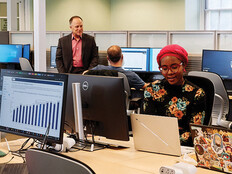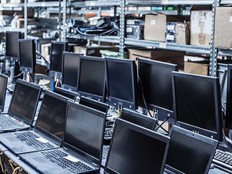Molding a True 21st Century Campus with Technology

Julie Smith is vice president of CDW•G Higher Education Sales.
For students, the 21st century campus offers electronic access to all learning materials, including syllabi, textbooks, handouts and online grades. Professors at a modern campus use e-mail to communicate, and students have space online where they can chat, post and blog about coursework.
For faculty members, a modern campus is a fully wired and wireless campus with ready access to computers, software, printers, scanners and other peripherals, and technology that's integrated seamlessly into courses and administrative functions. And for the IT staff, a 21st century campus is one that fully embraces distance education, offering an extensive array of online courses in addition to supplementing office hours and discussion sections of traditional courses with online forums and content offerings.
These are just some of the findings of the 2009 21st Century Campus Report: Defining the Vision, the second annual study by CDW•G that examines the role of technology in higher education.
Using the 2008 report as a baseline, this year's report took a deeper look into how campuses are (and, in some cases, are not) responding to evolving student technology needs. The 2009 survey also asked the higher education community to define the elements that constitute the 21st century campus.
Incoming students expect pervasive technology on campus, according to 70% of faculty and 76% of IT staff surveyed by CDW•G.
Source: 2009 21st Century Campus Report: Defining the Vision
The report, based on a survey of more than 1,000 students, faculty members and IT staff, found that access defines the 21st century campus: access to wireless technologies, to campus resources and to students, faculty and staff whether on campus or off.
The report also revealed some other striking findings about evolving IT use at colleges and universities:
- The importance of campus technology skyrockets for students. Students increasingly associate educational value with campus technology. Eighty-one percent use technology every day to prepare for class, up from 63 percent in 2008.
- Faculty and students do not see eye to eye on technology use. Faculty rate their use and understanding of technology as high, but students disagree with that assessment. Students cite the lack of tech knowledge among faculty members as the biggest obstacle to classroom technology integration — and they see it as a growing problem.
- Looking ahead, there is a general lack of confidence that students are adequately prepared to enter the workforce. Only 32 percent of students and 22 percent of faculty believe their colleges and universities are preparing students to successfully use technology on the job.
Be Inspired
The report's workforce preparation findings should serve as a call to action for the academic community. First, administration leaders should reach out to current students and recent grads to understand how they are using technology. IT staffs should then implement these tools immediately to help students stay ahead of the tech learning curve.
Second, universities and colleges must make technology ubiquitous. IT and faculty should offer the same technology and tools in the classroom that students use at home or will use in the workplace. Third, IT should work with faculty to create targeted technology professional development programs. Finally, administrators should promote distance learning. IT should help students and faculty connect with their counterparts around the world to enhance the learning experience.
Admittedly, this challenge is compounded as half of the IT staff surveyed report that their budgets decreased during the past year. Yet, these are goals worth pursuing. Why? Because one of the most significant takeaways from the survey is that students, faculty and IT staff all agree that technology provides a means to bring the campus community together and further educational goals. Although most acknowledge that colleges have yet to achieve the full vision of the 21st century campus, the insights distilled from the survey set a clear path forward.








